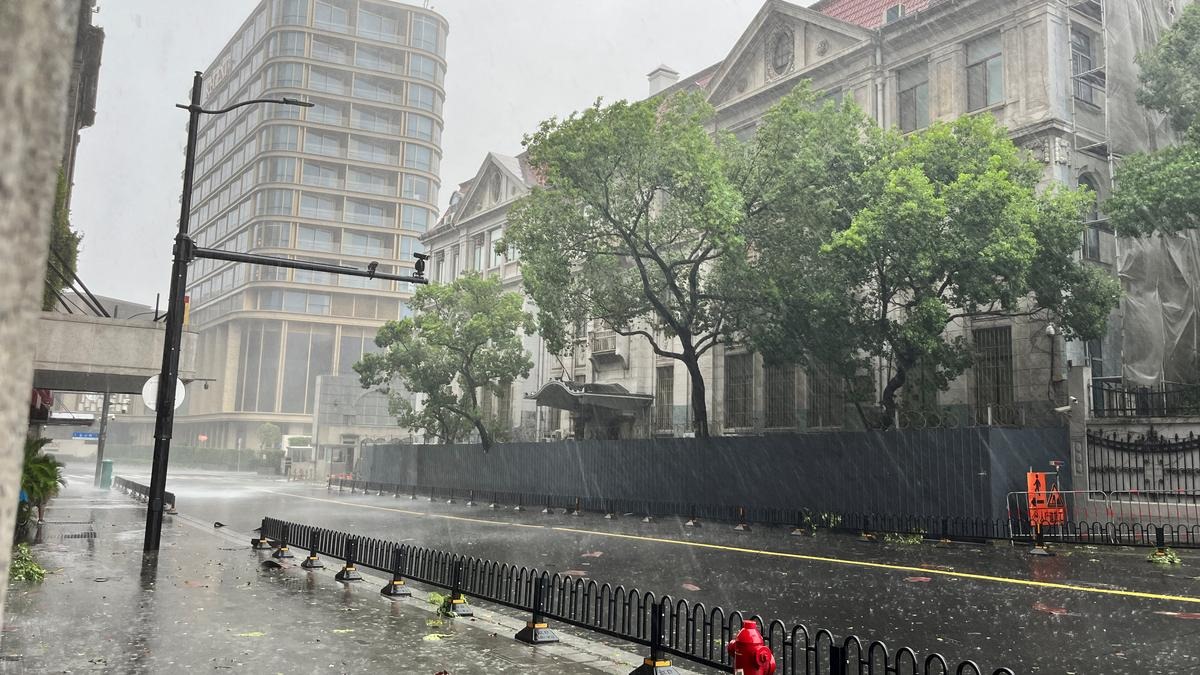Typhoon Bebinca: Shanghai Faces Shutdown as Strongest Storm Since 1949 Hits
On September 16, 2024, Typhoon Bebinca made landfall in Shanghai, marking the most powerful storm to hit the city since 1949. As the typhoon swept in with maximum wind speeds of up to 151 kilometers per hour (94 miles per hour), tens of millions of residents across Shanghai and the densely populated eastern coast of China were forced to hunker down indoors

Landfall and Immediate Impact
Typhoon Bebinca struck the coastal area of Lingang New City around 7:30 AM local time, bringing with it fierce winds and heavy rainfall. The China Meteorological Administration had issued a red alert, indicating severe weather conditions that could lead to coastal flooding and extensive damage. As a precautionary measure, authorities had already evacuated approximately 414,000 residents from vulnerable areas, particularly in coastal districts
The storm's arrival coincided with China's three-day Mid-Autumn Festival holiday, a time when many families travel and engage in outdoor activities. The timing exacerbated the chaos, as flights were grounded and public transportation services were suspended across the city
Disruptions to Transportation
In anticipation of the storm, all flights at Shanghai's two main airports—Pudong and Hongqiao—were canceled starting at 8 PM on Sunday evening. This affected over 600 flights, stranding thousands of travelers. Additionally, ferry services were halted, and major highways were closed to prevent accidents and ensure public safety. Train services were also suspended at various stations in the city
As the storm intensified, live feeds showed Shanghai's usually bustling streets nearly empty, with many businesses already closed for the holiday. Popular attractions like Shanghai Disney Resort shut down operations as a safety measure
Damage Reports and Emergency Response
Reports from state media indicated that Typhoon Bebinca left a trail of destruction in its wake. Numerous incidents were reported, including fallen trees and dislodged billboards. Videos circulating on social media depicted buildings with exteriors torn away and electricity poles overturned. The storm was responsible for significant property damage and power outages in various neighborhoods
Emergency crews were placed on high alert, with over 56,000 personnel ready to respond to any emergencies. Local authorities set up temporary shelters in exhibition halls and school gymnasiums for displaced residents
Broader Implications
Typhoon Bebinca is not just a localized event; it reflects broader climatic trends affecting China. Meteorologists have noted that extreme weather events are becoming more frequent due to climate change, which scientists attribute to human activities leading to increased greenhouse gas emissions. This year alone has seen rapid shifts between droughts and floods across various regions in China
The impact of Typhoon Bebinca is compounded by the recent devastation caused by Super Typhoon Yagi earlier this month, which claimed lives in southern provinces like Hainan. As such storms become more common, concerns about infrastructure resilience and emergency preparedness are paramount
Future Forecasts
As Typhoon Bebinca continues its path northwestward across eastern China, meteorologists predict that it will weaken into a tropical storm but still bring heavy rainfall and strong winds to neighboring provinces like Jiangsu, Zhejiang, and Anhui. Authorities are closely monitoring the situation as they prepare for potential aftereffects from the storm
Residents are urged to remain vigilant as cleanup efforts begin in Shanghai. The city's ability to recover from this historic storm will be critical not only for its immediate infrastructure but also for future preparedness against increasingly severe weather events.



